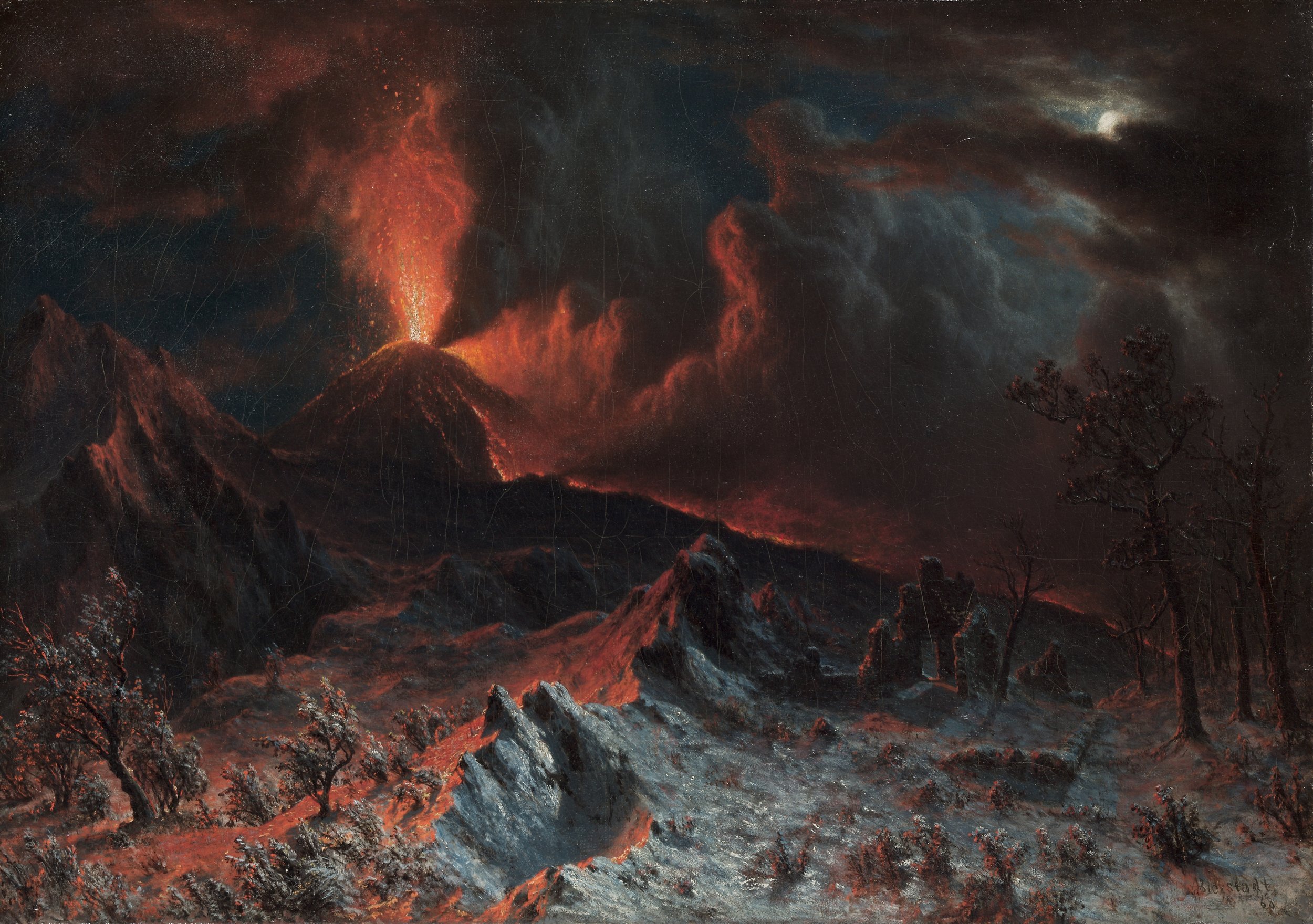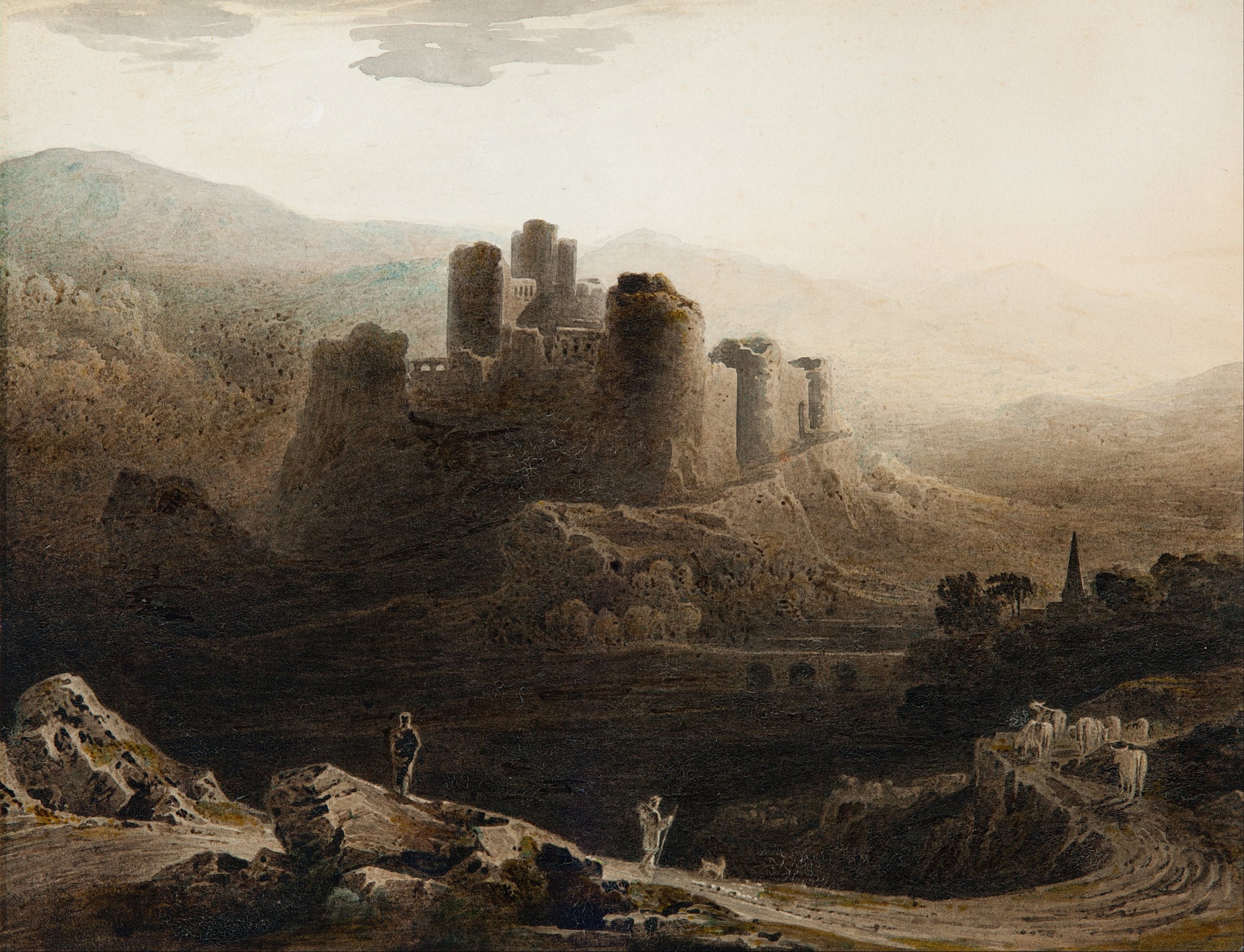Smash the Small Cosmos

Smash the Small Cosmos
Heidie Senseman
On the State of Christian Literature
How much happier you would be, how much more of you there would be, if the hammer of a higher God could smash your small cosmos. — GK Chesterton
Where are the Brian Doyles of today? I wrote in my notebook last month. And by that, I meant: Where are the literary Christian writers who aren’t overly cynical or overly sentimental? Where are the artful narratives born out of Christian belief?
I wrote this question while sitting in the lobby of a conference center that was hosting thousands of faith-interested writers for a weekend-long arts festival. I’d just returned from the conference’s exhibit hall—a room of booths staffed by editors and publishers and literary magazine representatives—where I’d gone looking for the heights of the Christian literary scene. I wanted to see what I might find there, if there might be a place for me in it.
I knew my work didn’t fit well with traditional Christian presses; they put out church ministry resources, religious self-help, devotionals—books that provide an encouraging Christian experience for a decisively Christian audience. I write essays that, though religiously informed, are too literary, too meandering, and too un-sanitized to deliver a tidy moral.
Mainstream publishers, on the other hand, wanted literary writing, and they were open to work that was spiritually conscious. But they wanted it slant. The subtitles on their display books helped me understand their angle. Lots of verbs like escaping and rejecting and shattering. Lots of breaking free and deconstructing. One editor, as he watched me scan his booth’s sample titles, announced that his press was “interested in the stories that Christianity wasn’t ready for.” At a different booth, I mentioned to an editor that I’d attended a Baptist college. She responded, “I’m so sorry,” with a tight-lipped grin meant to confer some sort of crooked empathy, or perhaps as a misguided gesture of solidarity.
My interactions with these editors left me demoralized, but not merely because they were critical of religion. I believe in a sort of productive and generous critique, a Christianized version of what James Baldwin wrote in Notes of a Native Son: “I love America more than any other country in the world and, exactly for this reason, I insist on the right to criticize her perpetually.” These are the kinds of critiques that feel worthwhile to me. They have stakes. They abide with that which they criticize. They are full of love, which is why they criticize. The tone I’d encountered in the conference’s exhibit hall, however, was of a different sort. Its purpose was to declare the misery of traditional Christianity; it lacked love.
Staring blankly across the conference center lobby, I returned to my notebook: Of course there are dark stories in Christianity, I wrote. Massive, grave, ugly warts. But we can’t act like that’s all there is. That would be a lie of omission, a distortion.
I sat there, chewing on the cap of my pen. Then a Brian Doyle essay, “Fatherness: A Note,” popped into my head. It felt relevant all of a sudden. In the essay, Doyle considers how much the story of divine fatherhood holds: the bloody gift of the Passion, the wrath of discipline, unwavering self-sacrifice for a sin-stained people, transcendent love.
It was the tonal breadth of this essay that had initially captured me. Horror and beauty. Darkness and brilliance. Any writer worth their salt needed to be able to offer an account of both. It’s a matter of ethos, I determined, which helped me understand something—I didn’t trust the resentful “exvangelical” narratives for the same reason I didn’t trust the sanitized Christian ones: neither was telling the whole story.
I wrote a final blurb in my notebook: Cultivate balance. No saccharine accounts of faith. Too naive, unsatisf ying, hollow, easy. And no bitter accounts either. Too dishonest, humorless, tired. Then I closed the cover and tried to source the angst that had seeped into my own entry.
*
I was once a writer who told bitter stories about Christianity. When I applied to graduate writing programs during my senior year of college, I built my applications around a persona: the enlightened, progressive, “spiritual” girl trapped in an ocean of fanatics at a fundamentalist college. I purported a kind of private devotion that made me “interesting”—perhaps a bit more in-tune with the transcendent—but I distanced myself from the stripes of organized religion.
In my applications, I wrote that “my peers, more than most, [were] martyrs to a narrow and didactic definition of truth.” I wrote that I’d seen “bland, timid groupthink” prevail. I wrote plenty of other condescending things about Christians because that seemed to be the tonal strategy adopted by successful authors writing about religion, which was the group I wanted to be in.
To be fair, I didn’t outright manufacture my grievances. I also wrote those critiques because there was an element of truth in them. After four years of Christian college, my administration’s emphasis on theological purity in literature had started to feel like paranoia. I’d become an anxious and uncharitable reader, preoccupied with the moral acceptability of a text, so concerned with verdicts that I rarely took the time to discover and sit with a text’s ideas. “This environment,” I suggested to my application reviewers, “has stifled my literary work.” I knew these were loveless words. But then I clicked “upload” and “submit” in 11 university portals.
Around the same time that I sent in my applicat ions, I bought Doyle’s The Thorny Grace of It at the recommendation of a professor. It was my reward for having survived application season. I’d read some of Doyle’s nature writing and enjoyed his spiritual attentiveness, so I figured it’d be worth the $15 price tag.
When the book arrived, I spent a long time staring at the subtitle: And Other Essays for Imperfect Catholics. I couldn’t decide if I thought it was cheesy or earnest. I flipped the book open, determined to find out, and landed on an essay titled “Piléir” on page 61.
“Piléir” opens with Doyle and a friend—both Irish Catholics—discussing the long history of Catholic persecution in Ireland. They recall stories of starvation and stench and hiding and exile. Then they focus on a particular story, delivered to them by the generations who passed it down.
This story takes place in Donegal, near a remote hedge where a priest-in-hiding illegally leads a small congregation through the Mass liturgy. When it comes time for Communion, the priest lifts the host to bless it. And then a British bullet strikes him between the eyes. A bevy of soldiers rush toward the worshippers with chains. That’s how the Mass ends.
The Anglican soldier who shoots the priest has a son, about age ten at the time, and that son is a bright and sensitive boy, one who grows up and goes to university and studies theology and enters the ministry. But then, slowly, the boy becomes interested in Catholicism, and he nurtures this interest until, one day, he outright converts.
This displeases his father. He and the son fight. One night, the father loses his temper and howls something he has never told anyone: that back in his military days, he killed a priest, shot him clean in the forehead mid- Mass, and he had never once regretted that bullet because it was what the priest and his fellow conspirators deserved. Bloody story. Grieved story.
But here’s how that story ends. The son leaves his father’s house and heads straight to the annals. He finds a record of the incident. He travels to the village where it occurred, and he asks the locals if they can point him to the hedge where Masses took place in the dark days. The next morning, he calls the villagers there. He leads them through the liturgy and “finishes the Mass that was interrupted thirty years before by a bullet.” After the service, the group digs a hole and buries a bullet—a piléir—alongside an unconsecrated host. And then they tell the story of it to their children, who tell it to their children, who hope that “the more people who know it, the fewer bullets there will be, perhaps.”
What surprised me at the end of “Piléir” was what I concluded the essay to be about. It didn’t strike me, ultimately, as a story of persecution or bullets, but rather, as a story about burying bullets, about a shocking act of grace in the face of evil. It left me in awe of the convert priest. It left me wondering how he’d been able to channel all his grief and rage into something restorative, something like love, which was far louder than his father’s murderous insistence.
I couldn’t recall an essay I’d read about faith and tragedy that took an angle like that. The essays I’d read were either angry or sentimental. This one was neither, but it had somehow tapped into the truest components of both: righteous grief, hard-fought hope.
I flipped ahead in Doyle’s collection and found more essays foregrounded by shocking moments of grace. Each essay had its route. Sometimes, like with “Piléir,” the stories were dramatic in their accounts of both violence and hope. Other times, like in “Sister Cook” and “Sister Anne”—two essays praising nuns for their service to schoolchildren—the stories were underwhelming, and the love came from Doyle’s dedication to exploring the “quiet corners” of his subjects. And sometimes, like in “Buying a Foot,” where Doyle’s war-maimed friend reviews different prosthetic materials (bamboo—terrible; tire rubber— pretty all right; wood—worthless; plastic—superior), humor was what carried us through the bleak details that might’ve otherwise consumed us.
The titular essay of The Thorny Grace of It provided more overt commentary on Doyle’s relationship with grief and grace. Structurally, the essay is a list of complaints. They start quippy—for example, the house is so musty “that slugs have their annual convention in the basement”—and with so much excess that we can laugh at the ways they reflect our own flair for the dramatic back to us. But as the essay goes on, the complaints become more serious. There really are “liars and charlatans in Congress,” and “the oceans are fouled,” and there are “millions of children in [our] country who will not eat tonight.” As these griefs compound, Doyle confesses that he sometimes looks around at all the suffering in the world and feels “naught but a great despair.”
And yet. One paragraph left. A turn. An appeal. Doyle remembers that “laughter and compassion, and creativity and wonder, and compassion and generosity” persist. So he arises from his bed, shuffles out into the bruised world, and “get[s] to work grinning.”
Usually, a sentiment like that would strike me as too easy. But not after Doyle has spent his book looking pain clean in the face. The word work— that we get to work grinning—implies a sort of productive struggle. I hear it with the same candor I imagine the Christ once spoke with when he told his troubled friends: Take heart! For I have overcome the world. A man of sorrows, foretelling tribulation and martyrdom and exile, still dead set on the bright message that Doyle whispers to himself in moments of despair.
The more I read The Thorny Grace of It, the more I thought about the failure of my grad school applications. I thought about my loveless, self-indulgent critiques. They had gotten me into an MFA program, sure, but they hadn’t helped my soul. I’d written pages criticizing my tribe, and I was still just as resentful; to call that sort of work “processing” would be a euphemism.
But reading Doyle’s essays helped me heal. I bought more of his books and let them teach me. I didn’t want to romanticize my resentment and call it “art” or “important.” I wanted to work, like Doyle had, to wrestle laughter and love out of seemingly barren places.
A couple months later, I shared this epiphany with my sister over the phone. I realized that it wasn’t just me who needed stories of Christian delight. My sister and I were in another iteration of the same conversation we’d been returning to weekly via long phone calls for over half a year. The phone calls were about my sister’s spiritual weariness.
She was feeling wearied by the pet issues of her denomination’s loudest members: Quiverfull theology, “stay at home daughters,” exclusive homeschooling. She was gray-eyed, and underweight, and trying to fend off postpartum depression as the women around her wondered aloud when she’d be trying for her next.
And she was feeling wearied by the death of a nine-year-old girl in the church, whose transplanted heart gave out in the days leading up to Holy Week, whose silhouette the church thought of that Palm Sunday as all the other children bobbed up the sanctuary aisle with palm fronds.
And by two recent cases of church discipline—one man rebuked for conducting himself like a tyrant in his home, another for his racist posts on Twitter. “I’m grateful the elders will address this stuff,” my sister said, “but even just the presence of it is heavy.”
It seemed that each time my sister called, she had more grim stories. Sometimes she’d apologize for the bleakness. She’d tell me there were good things happening too, but then she’d pause, and I’d feel her throat lock across the line.
“I just keep asking myself how I got here,” she continued. “When I was a new Christian at 15, I cared about, like, reading my Bible and talking to the lonely kid at lunch. I prayed all the time. Now it seems all anyone talks about—I mean, bickers about, really—is Christian nationalism and homeschooling. How did that become our focus?”
We were silent for a few moments. Then I asked, “Can I read you something?” She mmhmm-ed, and I reached for the book on the top of my nightstand pile.
“It’s an essay from that Catholic writer I like,” I said. “I like him because he addresses hard things without polemics or spiritual aphorisms. He’s humble. And funny. He writes about Jesus and Christians a lot. He seems to genuinely love them. He says his favorite topic is ‘grace under duress.’ I kind of read his books devotionally.”
“That sounds nice,” my sister whispered.
“This one’s called ‘Jesus Christ: The Missing Years,’” I said. And then I read: You know the story: we see Him at age twelve in the temple, giving his parents lip, and then we do not see Him again for eighteen years, until He goes on an extended speaking tour, seemingly finishing His run in Jerusalem, but then, stunningly, not.
My sister chuckled, sniff ling and coughing the way you do when laughter cuts off tears.
“That’s good,” she said. “‘Extended speaking tour’ is good.”
“Keep going?” I asked, and she mm-hmm-ed.
So I read on. I covered each of Doyle’s theories about how the teenaged Jesus spent his time. I could barely get through a theory without my sister choking on her laughter, asking me to go back and reread a line. She especially liked the bit about Jesus’ dream of starting a falconry business with two friends. We went on like that for a bit. I read more essays, and her voice regained its warmth. I shipped her a copy of the collection right after getting off the phone.
A few weeks later, I sent my sister a picture of “Credo,” the titular essay of one of Doyle’s older essay collections. Since her copy of The Thorny Grace of It had arrived, we’d gotten into the habit of texting each other poignant or funny lines from the book. I wanted to expand our practice to include more of Doyle’s work.
This particular essay was short. Doyle wrote it after a friend asked him why he was Catholic. The friend had been satisfied with the first few reasons Doyle mumbled, but Doyle himself had not been, and so he took the task of apologetics to the page.
I sent my sister the essay because it put language to the questions she’d been asking herself: What is the substance, the core of my faith? Why is it worth fighting to preserve? I thought the essay might be a sort of balm for her, as I knew Doyle’s writing had been for me.
I didn’t write any of this when I texted the essay, though. I just sent it without context. When my phone buzzed a few hours later, I could see that her reply was longer than usual. She wrote—
This paragraph:
“Christianity is a house that needs cleaning, a house in which savagery and cowardice have thrived, where evil has a room with a view. But it is also a house where hope lives, and hope is the greatest of mercies, the most enduring of gifts, the most nutritious of foods. Hope is what we drink from the odd story of the carpenter’s odd son.”
: is why I have not left the faith. I get depressed hearing stories of abuse within the church and living day in and day out in communities that bicker and seem to only grasp 1/10 of the Gospel, but this is what brings me back.
Amen, sis, I texted. Everything else I thought of felt pithy in response.
And then I said a prayer of gratitude for Doyle. For that shepherd of words who’d cracked my sister’s grief and helped us find deep wells of hope alive in our chests—wells tended to eternally by the One in whom there is no darkness. Amen, I whispered to myself. Amen.
Heidie Senseman
Writer & Student
Heidie is an MFA Candidate at the University of Iowa's Nonfiction Writing Program.
Painting by Albert Bierstadt




